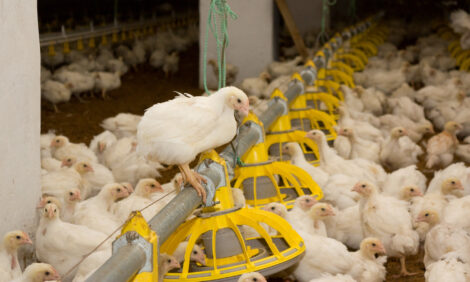



Cloning, Annotation and Developmental Expression of the Chicken Intestinal MUC2 Gene
Using the chicken as a model for research in humans, Purdue University researchers have found that a gene for intestinal mucin could help in the creation of new immune-based therapies.Intestinal mucin 2 (MUC2) encodes a heavily glycosylated, gel-forming mucin, which creates an important protective mucosal layer along the gastrointestinal tract in humans and other species, according to Purdue University researchers, Zhengyu Jiang, Todd J. Applegate and Amy C. Lossie.
In a paper published in PLoS ONE, they explain that this first line of defence guards against attacks from microorganisms and is integral to the innate immune system.
As a first step towards characterising the innate immune response of MUC2 in different species, they report the cloning of a full-length, 11,359bp chicken MUC2 cDNA, and describe the genomic organization and functional annotation of this complex, 74.5kb locus.
MUC2 contains 64 exons and demonstrates distinct spatiotemporal expression profiles throughout development in the gastrointestinal tract; expression increases with gestational age and from anterior to posterior along the gut. The chicken protein has a similar domain organisation to the human orthologue, with a signal peptide and several von Willebrand domains in the N-terminus and the characteristic cystine knot at the C-terminus.
The PTS domain of the chicken MUC2 protein spans around 1,600 amino acids and is interspersed with four CysD motifs. However, the PTS domain in the chicken diverges significantly from the human orthologue in that, although the chicken domain is shorter, the repetitive unit is 69 amino acids in length, which is three times longer than the human.
The amino acid composition shows very little similarity to the human motif, which potentially contributes to differences in the innate immune response between species, as glycosylation across this rapidly evolving domain provides much of the mucosal barrier, conclude Jiang and colleagues.
They add that future studies of the function of MUC2 in the innate immune response system in chicken could provide an important model organism to increase our understanding of the biological significance of MUC2 in host defence and highlight the potential of the chicken for creating new immune-based therapies.
Reference
Jiang Z., Applegate T.J. and Lossie A.C. 2013 Cloning, annotation and developmental expression of the chicken intestinal MUC2 gene. PLoS ONE 8(1):e53781. doi:10.1371/journal.pone.0053781
You can view the full report by clicking here.
February 2013









